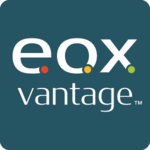Description

Zarafa

Liquit
Comprehensive Overview: Zarafa vs Liquit
Zarafa and Liquit are two distinct products that serve different purposes within the software industry. Below is an overview of each, including their primary functions, target markets, market presence, and differentiating factors.
Zarafa
a) Primary Functions and Target Markets:
- Primary Functions:
- Zarafa was an open-source groupware application that primarily served as an email and collaboration suite. It offered functionalities similar to Microsoft Exchange, including email, calendaring, contacts, and task management. It allowed full integration with existing environments and supported clients like Outlook and the Zarafa WebAccess (a web interface).
- Target Markets:
- Zarafa targeted small to medium enterprises (SMEs) and larger organizations looking for a cost-effective alternative to Microsoft Exchange. It was aimed at businesses that wanted open-source solutions with the flexibility to integrate into their existing infrastructure.
b) Market Share and User Base:
- Zarafa had a modest share of the market due to its open-source nature and the niche demand for Microsoft Exchange alternatives. Its user base comprised organizations preferring open-source applications and those seeking to reduce licensing costs associated with proprietary solutions.
c) Key Differentiating Factors:
- Open-source Model: Zarafa’s open-source approach allowed for flexibility and customization, appealing to companies with specific integration needs.
- Cost Efficiency: As an open-source solution, it offered a cost-effective alternative to proprietary groupware applications.
- Integration with Outlook: One of its main selling points was the seamless integration it provided with Microsoft Outlook, which was a major factor for businesses not wanting to change from Outlook as the client interface.
Liquit
a) Primary Functions and Target Markets:
- Primary Functions:
- Liquit is a software company focused on delivering solutions for workspace management and application delivery. Its core offerings include Liquit Workspace, an aggregation and delivery platform that offers centralized access to all types of applications, and Liquit Release & Patch Management to automate updating of software applications.
- Target Markets:
- Liquit primarily targets IT departments within organizations seeking to streamline application delivery and management. Its solutions cater to enterprises requiring efficient workspace environments and application management, often serving sectors such as government, finance, healthcare, and education.
b) Market Share and User Base:
- Liquit has a growing presence in the IT management and workspace solutions market. While it may not match the scale of larger players like Citrix or VMware, it appeals to organizations seeking innovative and user-friendly solutions for application and workspace management.
c) Key Differentiating Factors:
- Unified Workspace Management: Liquit provides a consolidated platform for managing all types of applications across different environments.
- Ease of Use and Deployment: Users often commend Liquit for its user-friendly interface, flexibility, and ease of deployment compared to some larger competitors.
- Vendor Compatibility: Liquit’s ability to work alongside major vendors and existing IT infrastructure is a significant advantage for businesses with complex environments.
Comparison and Analysis:
- Functionality and Use-Case: Zarafa was focused on groupware functionalities similar to Microsoft Exchange, whereas Liquit is centered around workspace management and application delivery.
- Target Audience: Zarafa appealed to organizations pursuing open-source, cost-effective alternatives for email and collaboration, while Liquit targets companies needing sophisticated application and workspace management.
- Market Dynamics: Zarafa had niche appeal in the market for open-source groupware, while Liquit, though not as large as giants in the field, addresses a specific need in the growing market for efficient workspace solutions.
- Adaptability and Integration: Both products focus on integration and adaptability, though in different contexts; Zarafa with Outlook and existing email infrastructures, and Liquit with diverse application environments.
In summary, while Zarafa focused on email and groupware functionalities, Liquit specializes in workspace and application management, each targeting specific market needs with unique differentiators in functionality and adaptability.
Contact Info

Year founded :
Not Available
Not Available
Not Available
Netherlands
Not Available

Year founded :
Not Available
Not Available
Not Available
Not Available
Not Available
Feature Similarity Breakdown: Zarafa, Liquit
As of my last update, Zarafa and Liquit are distinct products catering to different aspects of IT infrastructure and service management, so they may not have a substantial feature overlap. However, here is a breakdown based on typical offerings of such solutions:
a) Core Features in Common
Zarafa (now known as Kopano after rebranding) primarily focused on collaboration and communication, functioning similarly to Microsoft Exchange.
Liquit is a platform for application management and delivery, aimed at simplifying the deployment and management of applications in enterprise environments.
Common Core Features:
-
User Management:
- Both platforms support user management and access control functionalities, essential for their respective operations.
-
Integration Capabilities:
- They offer integration with existing IT infrastructure and various third-party services, although the specific integrations vary depending on the platform's focus.
-
Security:
- Basic security features such as authentication management, encryption, and activity logging/monitoring.
b) User Interfaces Comparison
Zarafa/Kopano:
- Typically features a web-based interface primarily concerned with email, calendar, and collaboration tools. User interaction is focused on communication efficiency and ease of accessing mails and calendar events.
Liquit:
- The interface is oriented towards IT administrators and end-users, providing a dashboard for managing and launching applications. It aims to provide a seamless user experience for application delivery with intuitive navigation and clear, concise management options.
Overall, Zarafa/Kopano offers a UI aligned with email clients and groupware solutions, whereas Liquit's interface suits enterprise application management.
c) Unique Features
Zarafa/Kopano:
-
Email and Calendar Synchronization:
- A core strength is its ability to replicate functionalities of traditional email servers like Microsoft Exchange, including advanced email management and calendar synchronization.
-
Open Source Nature:
- Kopano's open-source roots allow for extensive customization and adaptability in self-hosted environments.
-
Unified Collaboration:
- Provides built-in integration with chat, video conferencing, and file sharing, although usually within its ecosystem or via third-party tools.
Liquit:
-
Workspace Automation:
- Offers unique features like workspace automation, allowing IT departments to automate application deployment and management.
-
Application Catalog:
- Liquit provides an extensive application catalog, granting users easy access to a range of software centrally managed by the IT department.
-
Dynamic Interface Management:
- Allows for the customization of the user experience based on roles, enhancing security and user productivity.
Liquit's focus on simplifying application management sets it apart, whereas Zarafa's strengths lie in communication and collaboration functionalities. As of 2023, reviewing the latest product updates from their respective websites or user communities may provide more current comparisons and specific features.
Features

Not Available

Not Available
Best Fit Use Cases: Zarafa, Liquit
Zarafa and Liquit serve distinct purposes and are suited to different business needs. Here's a breakdown of their best-fit use cases and how they cater to various industry verticals or company sizes:
Zarafa
Zarafa is primarily known as a collaboration and groupware platform. It offers email, calendar, and collaboration tools similar to Microsoft Exchange, but with an open-source framework. Here’s how it can be leveraged:
a) Best Fit for Businesses or Projects:
- Medium to Large Enterprises: Companies that require robust email and collaboration solutions but want to avoid the licensing fees associated with Microsoft Exchange or Office 365 might find Zarafa to be a good choice.
- Organizations with Open-Source Preference: Businesses that prioritize open-source software due to flexibility, transparency, or cost considerations.
- Data-Sensitive Organizations: Entities that need to self-host their collaboration tools to maintain control over their data, such as financial institutions, healthcare providers, or governmental bodies.
d) Industry Verticals and Company Sizes:
- Education: Institutions seeking to provide communication and collaboration tools for students and staff.
- IT Services: Companies that may want to customize and integrate their collaboration platforms deeply with existing systems.
- Non-Profit: Organizations with limited budgets looking for cost-effective software solutions.
Liquit
Liquit is a workspace management and application delivery platform. It focuses on providing seamless access to applications and services, thus boosting productivity in digital workplace environments.
b) Preferred Scenarios for Liquit:
- Companies Undergoing Digital Transformation: Businesses looking to modernize their IT infrastructure and enhance their digital workspace environments.
- Remote or Hybrid Workforces: Organizations with employees who need consistent and secure access to applications regardless of their location.
- Complex IT Environments: Companies with diverse applications and systems seeking a unifying platform to simplify application delivery and management.
d) Industry Verticals and Company Sizes:
- Healthcare: Facilities that need to ensure that medical professionals can reliably access critical applications and data.
- Finance: Firms that require efficient delivery of financial applications with strong security measures in place.
- Large Enterprises: Businesses with multiple departments and complex IT setups in need of streamlined access for users across the globe.
Both Zarafa and Liquit cater to different operational needs. Zarafa is more suited to traditional collaboration needs, especially for those who prefer open-source and self-hosted solutions, whereas Liquit excels in application delivery and workspace management, which is increasingly vital in modern, flexible work environments.
Pricing

Pricing Not Available

Pricing Not Available
Metrics History
Metrics History
Comparing undefined across companies
Conclusion & Final Verdict: Zarafa vs Liquit
To provide a comprehensive conclusion and final verdict for Zarafa and Liquit, let's analyze each part of your request:
a) Considering all factors, which product offers the best overall value?
When evaluating overall value, it's crucial to consider the specific needs and context of the organization or individual making the decision. This includes factors like cost, features, ease of use, compatibility, and support.
-
Zarafa: Known for its robust email and collaboration tools, Zarafa might offer better value for organizations primarily needing a reliable enterprise email system with groupware capabilities. It is suitable for businesses looking for an on-premise alternative to Microsoft Exchange.
-
Liquit: With its focus on application management and digital workspace solutions, Liquit is likely to provide more value to companies looking to streamline their application delivery and workspace management. Particularly, it supports cloud integration and offers flexibility for hybrid work environments.
Overall Value Verdict: If your primary need is an efficient email and collaboration platform, Zarafa could offer better value. However, if your focus is on application management and creating a flexible digital workspace, Liquit would be the more valuable choice.
b) What are the pros and cons of choosing each of these products?
Zarafa:
Pros:
- Strong email and collaboration functionalities.
- Can be a cost-effective alternative to bigger solutions like Microsoft Exchange.
- Offers good control over data with on-premise deployments.
Cons:
- May have a steeper learning curve for users unfamiliar with similar groupware.
- Limited features compared to cloud-based collaboration platforms that also offer integrated video conferencing, chat, etc.
- Reduced market presence/continuity concerns due to evolution into Kopano.
Liquit:
Pros:
- Facilitates seamless application delivery and management.
- Enhances digital workspace flexibility and user experience.
- Cloud-compatible and supports hybrid working environments.
Cons:
- May require more initial configuration and setup for optimal use.
- Might be overkill for companies that do not have complex application delivery requirements.
- Potentially higher pricing depending on the depth of features utilized.
c) Are there any specific recommendations for users trying to decide between Zarafa vs Liquit?
Recommendations:
-
Assess Your Primary Needs: Determine whether your organization needs a powerful email collaboration tool or if there is a greater need for managing multiple applications and improving digital workspace efficiency.
-
Consider Future Growth and Scalability: Evaluate which platform aligns with your future IT strategy—whether expanding your email communications infrastructure or enhancing remote work capabilities and application management.
-
Budget and Resources: Factor in not just the upfront cost but also the Total Cost of Ownership (TCO), including maintenance, potential training, and support.
-
Pilot Both Solutions: If possible, test both products to see which aligns better with your workflows, integrates seamlessly with existing systems, and is preferred by users.
-
Consult with Stakeholders: Gather feedback from various departments to ensure the solution you choose addresses the broadest range of needs effectively.
By following these recommendations, organizations can make an informed decision that aligns with their operational strategy and long-term goals.
Add to compare
Add similar companies




